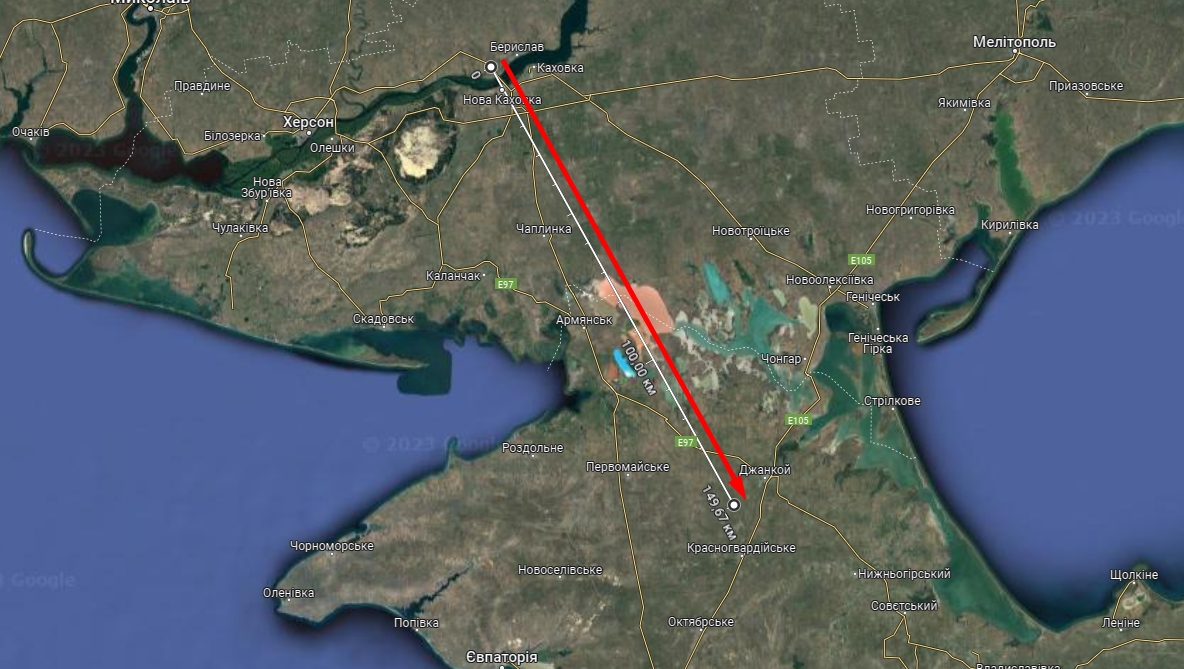In 2024, Ukrainian rocket artillery may begin destroying Russian invaders with GLSDB ammunition.
On February 3, 2023, the United States announced an aid package that included GLSDBs, which were planned for future transfers to Ukraine.
GLSDBs may appear in Ukraine soon: Boeing stated it has already transferred a batch of them to the United States, which will begin testing these weapons for Ukraine in December 2023.
Many countries’ ground forces are increasingly challenged with tasks that require greater range, flexibility, and mobility.
Saab and Boeing’s investment in developing solutions to this issue led to a new, effective answer.
GLSDB uses two battle-proven systems that allow operators to quickly hit a variety of targets, at any angle over a considerable distance.
The history of the GLSDB begins with Boeing’s GBU-39 precision-guided glide bomb, the first in the Small Diameter Bomb (SDB) family.
Since the start of mass production in 2006, tens of thousands of GBU-39 have been shipped to customers worldwide.
The ammunition warhead weighs 93 kilograms and contains 16 kilograms of explosive.
When diving on a target from a high altitude, thanks to the tungsten tip, it is able to penetrate concrete shelters.
The fuze system allows it to also select the airburst or adjustable delay explosion after hitting before the bomb release.

In addition to accuracy, the main advantage of the GBU-39 is stealth, which makes it difficult to repel a massive strike with such a weapon using anti-aircraft missile means.
The bomb has wings that fold in flight, which significantly increases the strike range.
Its weight is quite small, only 130 kg, the diameter is about 190 mm, the length is about 1.8 m.

The initial versions of the bomb had a circular error probability of 5-8 m.
This accuracy is achieved due to an on-board guidance system with inertial navigation channels and GPS.
Inertial channels can provide operation in conditions of intense EW jamming by the enemy.
Released from a sufficient altitude, the SDB can independently glide for a distance of up to 110 km.
In 2011, Boeing took on a new project with the SDB, called the Ground-Launched Small Diameter Bomb (GLSDB).
As part of the GBU-39 project concept, the developers wanted to provide the capability to launch bombs from ground launchers.
For the bomb, the engine was selected from the М26 rocket, which is used to launch from the М142 HIMARS and М270.

The maximum firing distance of GLSDB can reach 150 kilometers in the direction of launch.
Thus, the GLSDB is a glide bomb crossed with a solid rocket motor.
With the help of a rocket motor, the bomb accelerates to a speed of 900-1200 m/s, after which, when it reaches an altitude of about 15-25 thousand meters, it is disconnected from the acceleration unit and begins controlled gliding to the target.

The uniqueness of GLSDB is that it is capable of reaching 360-degree coverage for large and small angles of attack, flying around the folds of the terrain and striking targets located in the mountains, as well as returning to the target, which is behind the initial course of flight.
They chose a rocket motor from a М26 rocket because many М270 MLRS operators joined the international Convention on Cluster Munitions signed in 2008, which prohibited the storage, use, and sale of ammunition of this class and obliged the signatories to destroy their stocks.
Boeing has realized that hulls and rocket motors from the М26 cluster rockets can be reused and suggested that they be redesigned for the use of the GBU-39.

However, the U.S. Department of Defense was not interested in the initiative then, supporting Lockheed Martin’s ER-GMLRS long-range project, which is still being tested today.
In 2014, the Swedish company Saab joined the project and, on equal terms, started developing GLSDB together with Boeing.
“Saab and Boeing have a history of successful cooperation, which now extends to another technology industry – precision weapon systems,” the partners said.
Already in 2015, at the training ground in Sweden, partners were making three successful test launches of prototypes of the new rocket, which confirmed the operability of all structural elements.

The next series of tests was carried out in 2017 at a test site in the United States.
At the same time, they successfully demonstrated the possibility of maneuvering the bomb along a complex trajectory for withdrawal to a given area and laser semi-active guidance to a mobile sea target at a distance of about 100 kilometers.

“Now the accuracy of the GLSDB is so high that it can hit the radius of the car tire,” Saab said.
In 2019, Norway’s Saab and Boeing tested the GLSDB for an even longer range.
The purpose of the test was to hit a given target at sea at a distance of 130 km from a specially designed container launcher.
The deviation of the hit point in the sea of the SDB bomb was about one meter.
In test firing, a new solid rocket motor from the Norwegian company Nammo was installed.
This paved the way for the Norwegian defense industry to join the program, which proposed developing a new powerful motor for the GLSDB.
In November 2021, Saab signed a memorandum with two major Norwegian companies for the GLSDB program.

The first of these firms was Nordic Shelter, which developed many containers for mobile platforms, electronics, etc.
As part of the GLSDB program, Nordic Shelter received financial support from the government to develop an autonomous launcher that mounts in a standard 20-foot marine shipping container.
The new launch container can also open the road to the ship’s GLSDB.
It can be deployed on any road, railway, or sea platform adapted for such transportation or used in a fixed position with a remote control.
In their turn, Nammo specialists will equip the guided missile with a new engine.
One of the primary goals for the GLSDB program’s development is to expand the range to 200 kilometers and then much beyond.
The great advantage of the new ammunition is its ease of use in preparation for firing.
GLSDB can be installed in six launch containers and loaded on HIMARS/M270 with which Ukraine is armed.
That is 12 missiles in the tracked version of the M270 and 6 missiles in the light-wheeled HIMARS.
In the future, Ukraine may also receive a Norwegian solution for container launchers.
GLSDBs are quite mobile and have special devices that make their interception using Russian air defense systems extremely difficult.
Of course, apart from the reports of the Russian military command, which has been allegedly shooting down the GLSDB over Ukraine regularly since March 2023.

Russia has something to counter. First of all, there is the Tor short-range anti-aircraft missile system and the Pantsir-S1 anti-aircraft missile system.
If Ukraine is supplied permanently with GLSDB, then the Russian command will have to move almost all depots deeper in the rear.
A Diameter bomb can reach the northern regions of Crimea, including Armyansk and beyond.

The task force and means of technical support may undergo significant changes.
It will be necessary to redeploy maintenance units and corresponding depots – artillery weapons, armor, automobiles, etc.
Command, rear, and auxiliary control posts will either have to be moved away from the battle contact line, or be camouflaged more carefully.
Підтримати нас можна через:
Приват: 5169 3351 0164 7408
PayPal - paypal@mil.in.ua
Стати нашим патроном за лінком ⬇
Subscribe to our newsletter
or on ours Telegram
Thank you!!
You are subscribed to our newsletter